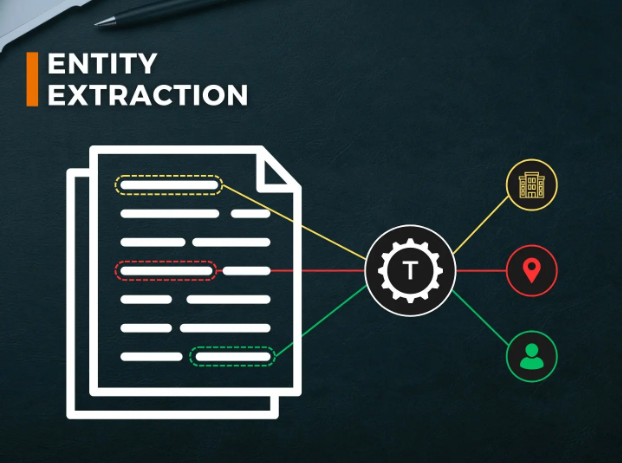How Entity Extraction is Transforming Natural Language Processing

Natural Language Processing, or NLP, is a branch of artificial intelligence that helps computers understand, interpret, and respond to human language. Over the past few years, one of the most significant advancements in NLP has been Entity Extraction. This technology is changing the way machines process text and understand human communication.
Understanding Entity Extraction
Entity Extraction is the process of identifying and categorizing key elements in a text. These elements, called entities, can include names of people, organizations, locations, dates, quantities, and more. For example, in the sentence “Elon Musk founded SpaceX in 2002,” an entity extraction system would recognize “Elon Musk” as a person, “SpaceX” as an organization, and “2002” as a date.
By highlighting and classifying these important pieces of information, Entity Extraction helps machines focus on the most relevant parts of the text. This makes it easier for applications to analyze large volumes of data accurately and quickly.
The Role of Entity Extraction in NLP
In NLP, understanding context and meaning is crucial. Raw text by itself can be confusing for machines because human language is often ambiguous. Entity Extraction bridges this gap by providing structure to unstructured data. It allows NLP systems to identify relationships between entities and understand the content more deeply.
For example, in news articles, social media posts, or research papers, Entity Extraction can quickly pinpoint key individuals, locations, events, and dates. This structured understanding enables more advanced NLP applications, such as summarization, sentiment analysis, and question-answering systems.
Applications of Entity Extraction
Entity Extraction is being applied in various industries to improve efficiency and decision-making. In the healthcare sector, it can identify patient names, medications, symptoms, and medical conditions from clinical notes. This allows hospitals and clinics to organize patient data more effectively and enhance healthcare outcomes.
See also: Mastering Shipping Tracking in Modern Business
In finance, Entity Extraction helps analyze financial reports, market news, and investment research. By identifying companies, stock symbols, and economic events, analysts can make informed decisions faster. Similarly, in customer service, chatbots use Entity Extraction to recognize customer names, order numbers, and issues, enabling more accurate and personalized responses.
How Entity Extraction Enhances Data Analysis
One of the most powerful aspects of Entity Extraction is its ability to turn unstructured text into structured data. This structured data can then be analyzed, visualized, and used for predictive modeling. For example, businesses can track mentions of their brand across social media, identify customer sentiments, and respond to emerging trends.
Entity Extraction also improves search functionality. Instead of simply matching keywords, search engines and enterprise search systems can understand the meaning behind queries and return more relevant results. This enhances user experience and saves time.
Challenges in Entity Extraction
Despite its benefits, Entity Extraction is not without challenges. Human language is highly nuanced, and context matters a lot. For instance, the word “Apple” can refer to the fruit or the technology company depending on the sentence. Entity Extraction systems must be sophisticated enough to understand these distinctions to avoid errors.
Another challenge is multilingual text. Extracting entities accurately from texts in different languages requires additional processing and training data. Nevertheless, advancements in machine learning and NLP models are continuously improving the accuracy and efficiency of Entity Extraction.
The Future of NLP with Entity Extraction
As NLP continues to evolve, Entity Extraction will play an even more significant role. With the rise of AI-powered assistants, automated content analysis, and intelligent data processing, the ability to quickly identify and understand entities will be crucial.
We can expect Entity Extraction to integrate more deeply with other AI technologies, such as machine translation, speech recognition, and knowledge graphs. This integration will make NLP systems smarter, more intuitive, and capable of providing better insights in real-time.
Conclusion
Entity Extraction is transforming the way machines understand and process human language. By identifying key elements within text, it provides structure, clarity, and context to vast amounts of unstructured data. Its applications span healthcare, finance, customer service, and more, making it an indispensable tool in modern NLP.
As technology advances, the importance of Entity Extraction will continue to grow, enabling more intelligent systems that understand language like never before. For businesses, researchers, and developers, embracing this technology means staying ahead in the rapidly evolving world of artificial intelligence and NLP.



